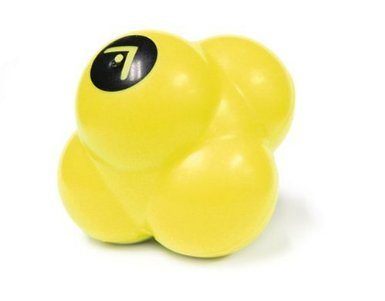
If You Throw a Ball, You Will Get Tight
That is just a simple fact. We actually proved this several years ago in an article in the American Journal of Sports Medicine. We found that immediately after throwing a bullpen, pitchers lost 10 degrees of internal rotation of their shoulder. The eccentric nature of decelerating after you throw produces damage to the muscles much like after what you feel when you get a good lift in, and are tight the next couple of days.
In a nutshell, your rotator cuff and other posterior shoulder muscles get tight from the trauma of throwing. If this isn’t addressed, it is cumulative and will get tighter and tighter over time.
So what do we do about it? I always recommend some good manual therapy, massage work, and “smart” stretching prior to throwing. What if you don’t have someone to work with? There are some stretches that I would recommend, and not recommend.
I Don’t Recommend the Sleeper Stretch
The sleeper stretch has become a very popularly recommended stretch for throwers. I’ve discussed what I don’t like about the sleeper stretch in the past, but essentially, I feel like it was developed for inaccurate reasons as a tool to help with GIRD (glenohumeral internal rotation deficit) before we really understood that the answer the GIRD wasn’t to torque your shoulder into internal rotation
In the 1000’s of baseball pitchers I have worked with, I don’t use the sleeper stretch, aggressively stretch into internal rotation, or routinely mobilize the posterior capsule. Honestly. In fact, I have seen more people do more harm than good by overusing the sleeper stretch
In my experience, GIRD has more to do with muscular tightness and alignment than anything else. Addressing these with good manual therapy is more successful and less stressful on the shoulder.
Here are some interesting related links to read:
- Why I don’t like the sleeper stretch
- What to do instead of the sleeper stretch
- If you are going to do the sleeper stretch, at least do it this way
I should say that I do think there is a time and place for the sleeper stretch, but it isn’t my first line of defense. If you don’t have someone to work with that can help, try the below two warm up stretches prior to throwing instead of the sleeper stretch and see if it they help.
How to Stretch Before You Throw
Remember earlier I mentioned that the rotator cuff and posterior shoulder get tight from decelerating the arm when you throw? That is what the focus of stretch it going to be on. Here are two ways to work on this area, one a simple stretch, and the other a self-myofascial release technique.
The Genie Stretch
The first stretch is called the Genie Stretch. Russ Paine, a great PT and friend in Houston showed me this one and wrote about it in his chapter in my book The Athlete’s Shoulder. It is essentially a cross body stretch of the back of your arm. However, you use the opposite arm to enhance the stretch and stabilize the arm. Studies have shown that cross body stretching is more effective than the sleeper stretch at restoring your shoulder internal rotation (your GIRD).
To perform the exercise, cross your arms out in front of you with your throwing arm on the bottom. In this position you’ll look like a genie (or at least the Genie from “I Dream of Genie,” not really the he genie from Aladdin…). Grasp the back of your throwing elbow with your other hand and stretch across your body. Your other arm pulls the arm across for the stretch and prevents the shoulder from rotating into external rotation. Hold this stretch from 5-10 seconds and repeat 3-5 times.
Notice if you don’t stabilize the arm, your hand will want to drift up into external rotation as you come across the body.
The Trigger Point Stretch
The next stretch is similar, however the focus is more on digging into the tissue with a trigger point ball than it is stabilizing the arm. For this stretch you can use any type of ball. Lacrosse balls and tennis balls work fine with varying amount of pressure. But I do prefer either the Trigger Point Ball or one of the reaction balls with the nubs on them.
To perform this stretch, place the trigger point ball on the back of the shoulder and lean against a wall. With the ball in place, perform the cross body stretch. The trigger point ball acts as a deep tissue massage as you stretch the muscles. You can play around with the position of both the ball and your arm to get a great trigger point release. I like to find a good spot, hold for about 10 seconds, then perform the cross body stretch a few times with the ball in the same spot. Do this in a few different spots.
That’s really it. Try these two stretches before you throw instead of the sleeper stretch and see how you feel throwing. If you are super tight and feel like you need to also do the sleeper stretch, that is fine, but if that is the case, you should probably seek some skilled help in working on your soft tissue.
[hr]






